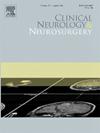早发性失神性癫痫的临床、病因学和治疗概况:一个病例系列分析。
IF 1.8
4区 医学
Q3 CLINICAL NEUROLOGY
引用次数: 0
摘要
典型失神发作是一种特殊形式的癫痫活动,通常在儿科人群中观察到,主要表现在4至10岁之间,构成儿童期失神癫痫(CAE)。然而,有一小部分患者表现为早发性失智性癫痫(EOAE),其特征是在4岁之前癫痫发作,抗癫痫药物治疗通常显示出良好的结果。相反,非典型失神发作持续时间较长,常伴有强直性、无张力性或肌阵挛性运动因素,表明其临床病程更为严重,通常与儿童期癫痫性脑病有关。最近的遗传学研究强调了特定基因的参与,特别是SLC1A2突变,在10. %的EOAE病例中发现,是GLUT1缺乏症的基础。及时识别这种遗传异常有助于量身定制的干预措施,包括生酮饮食方案,可改善癫痫症状和神经认知后遗症。本回顾性研究旨在描述EOAE和早发非典型失神发作的独特特征,促进及时诊断,特别强调遗传畸变,并启动精确的治疗方法以优化患者的预后。Modena Policlinico神经儿科门诊对23例4岁以内癫痫缺失患者进行了评估,发现非典型癫痫缺失的儿童通常表现出复杂的临床和脑电图表型,通常与遗传异常有关。值得注意的是,在这个亚组中,神经认知预后似乎不太好,有一半的患者表现出耐药性。相比之下,所有EOAE病例均表现出癫痫发作自由,证实了先前文献表明这些个体的临床病程相对良性。本文章由计算机程序翻译,如有差异,请以英文原文为准。
Clinical, etiological, and therapeutic profile of early-onset absence seizures: A case series analysis
Typical absence seizures represent a distinctive form of epileptic activity typically observed in pediatric populations, predominantly manifesting between the ages of 4 and 10, constituting Childhood Absence Epilepsy (CAE). However, a subset of patients presents with Early-onset Absence Epilepsy (EOAE), characterized by seizure onset before the fourth year of life, often displaying favorable outcomes with antiseizure medication. Conversely, atypical absence seizures exhibit prolonged duration and frequently entail tonic, atonic, or myoclonic motor elements, suggesting a more severe clinical course, commonly associated with epileptic encephalopathies of childhood onset. Recent genetic investigations have highlighted the involvement of specific genes, notably the SLC1A2 mutation, identified in 10 % of EOAE cases, underlying the GLUT1 deficiency syndrome. Timely recognition of such genetic anomalies facilitates tailored interventions, including ketogenic dietary regimes, shown to ameliorate epileptic symptomatology and neurocognitive sequelae. This retrospective study aimed to delineate the distinct features of EOAE and early-onset atypical absence seizures, facilitating prompt diagnosis, particularly emphasizing genetic aberrations, and initiating precision therapeutic approaches to optimize patient outcomes. Evaluation of 23 patients with absence epilepsy onset within the first four years of life, conducted at the Neuropediatrics Outpatient Clinic of the Policlinico of Modena, revealed that children with atypical absences often exhibit a complex clinical and electroencephalographic phenotype, frequently associated with genetic abnormalities. Notably, neurocognitive prognosis appears less favorable in this subgroup, with half of the patients displaying pharmacoresistance. In contrast, all EOAE cases demonstrated seizure freedom, corroborating previous literature suggesting a relatively benign clinical course in these individuals.
求助全文
通过发布文献求助,成功后即可免费获取论文全文。
去求助
来源期刊

Clinical Neurology and Neurosurgery
医学-临床神经学
CiteScore
3.70
自引率
5.30%
发文量
358
审稿时长
46 days
期刊介绍:
Clinical Neurology and Neurosurgery is devoted to publishing papers and reports on the clinical aspects of neurology and neurosurgery. It is an international forum for papers of high scientific standard that are of interest to Neurologists and Neurosurgeons world-wide.
 求助内容:
求助内容: 应助结果提醒方式:
应助结果提醒方式:


